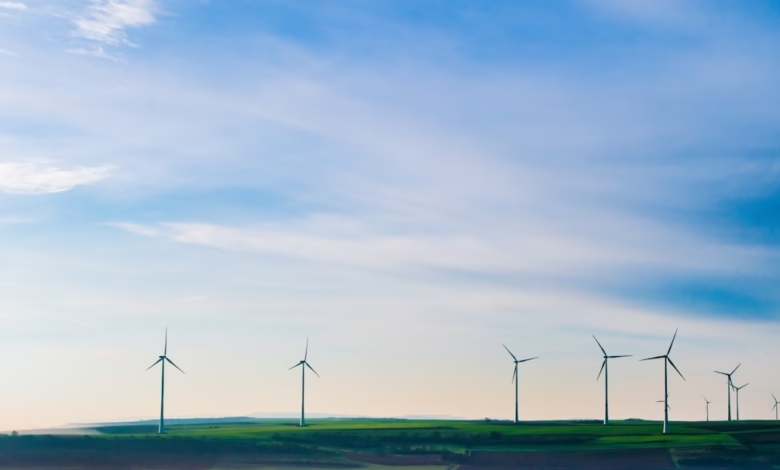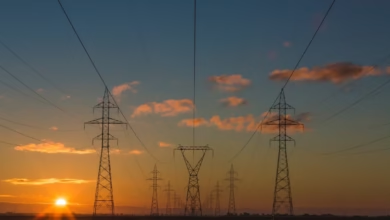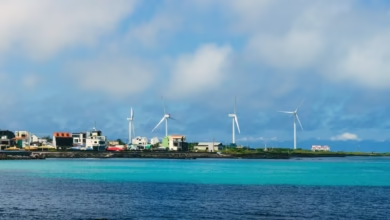Navigating the Energy Transition: How Energy Policies and Innovations Combat Climate Change

As the world grapples with the escalating effects of climate change, the role of energy in combating global warming has never been more crucial. Energy production and consumption are deeply intertwined with environmental sustainability, influencing everything from carbon emissions to energy security. This article delves into the multifaceted relationship between energy and climate change, highlighting how innovative energy policies can drive effective climate change mitigation.
We will explore the impact of renewable energy and energy efficiency on global warming, emphasizing the importance of transitioning from traditional fossil fuels to sustainable alternatives. As we navigate this energy transition, the roles of nuclear energy, hydropower, bioenergy, and emerging green energy solutions will be examined. Additionally, the article will address cutting-edge innovations in energy storage and smart grids, which are vital in enhancing energy security and facilitating the shift to a cleaner energy economy.
By understanding the current global energy trends and the dynamics within energy markets, we can better appreciate the critical investments required in energy R&D and infrastructure. From solar power and wind energy to hydrogen energy and electric vehicles, the future of energy is bright and essential for a sustainable planet. Join us as we uncover the pathways to a cleaner, more resilient energy future in the face of climate change.
- 1. The Impact of Energy Policies on Climate Change Mitigation: A Focus on Renewable Energy and Energy Efficiency
- 2. Transitioning to a Sustainable Future: The Role of Fossil Fuels, Nuclear Energy, and Green Energy Solutions
- 3. Innovations in Energy Storage and Smart Grids: Driving the Energy Transition and Enhancing Energy Security
1. The Impact of Energy Policies on Climate Change Mitigation: A Focus on Renewable Energy and Energy Efficiency
Energy policies play a crucial role in shaping the landscape of climate change mitigation. As nations grapple with global warming, the shift towards renewable energy and energy efficiency emerges as a pivotal strategy. This transition not only reduces dependence on fossil fuels but also fosters a robust energy market that embraces innovation and sustainability.
Renewable energy sources such as solar power, wind energy, hydropower, and bioenergy are at the forefront of this energy transition. According to the International Renewable Energy Agency (IRENA, 2023), investments in renewable energy projects have surged, reflecting a significant shift in energy investment patterns. By prioritizing green energy, countries can enhance their energy security and reduce greenhouse gas emissions. For instance, the increased deployment of offshore energy and thermal energy systems contributes to a diversified energy portfolio that can withstand market fluctuations.
Energy efficiency measures further complement the adoption of renewable energy. Implementing smart grids and energy storage solutions allows for better management of energy consumption, leading to reduced energy waste and lower carbon footprints. Innovations in energy transportation, particularly the rise of electric vehicles (EVs), signify a major leap towards sustainable mobility, thus decreasing reliance on fossil fuels.
Moreover, energy policies that incentivize carbon capture technologies and hydrogen energy development are essential to achieving net-zero emissions. By integrating these technologies into energy R&D, nations can unlock new potentials in energy economics, creating jobs and fostering economic growth while addressing climate change.
The importance of distributed energy solutions cannot be overstated. They empower consumers to generate their own energy, thus enhancing resilience and contributing to local energy markets. As global energy trends shift towards decentralized systems, energy imports and exports will also evolve, necessitating strategic energy policies that promote sustainability and economic benefits.
In conclusion, the impact of energy policies on climate change mitigation is profound. A concerted focus on renewable energy and energy efficiency not only combats global warming but also paves the way for a sustainable energy future. By embracing these strategies, we can foster a cleaner planet while ensuring energy security and economic stability.
References:
International Renewable Energy Agency. (2023). Renewable Power Generation Costs in 2023. Retrieved from [IRENA](https://www.irena.org/publications/2023/Jun/Renewable-Power-Generation-Costs-in-2023)
2. Transitioning to a Sustainable Future: The Role of Fossil Fuels, Nuclear Energy, and Green Energy Solutions
The transition to a sustainable future is critical in combating climate change and requires a multifaceted approach that incorporates various energy sources. Fossil fuels, while historically dominant in global energy markets, must be managed responsibly as we shift towards greener alternatives. The challenge lies in balancing immediate energy needs with long-term sustainability goals.
Nuclear energy presents a low-carbon option that can help bridge the gap during the energy transition. As a reliable source of thermal energy, it contributes significantly to energy security and helps reduce reliance on fossil fuels. Innovations in nuclear technology, such as small modular reactors, are paving the way for safer and more efficient energy production, which can be integral to meeting global energy trends.
Renewable energy sources, such as solar power, wind energy, hydropower, and bioenergy, are at the forefront of the energy transition. These green energy solutions provide sustainable alternatives that not only mitigate carbon emissions but also enhance energy efficiency. The integration of diverse renewable energy sources into the energy market is crucial for establishing a resilient energy system. For instance, energy storage technologies are essential for balancing supply and demand, allowing for the effective utilization of intermittent resources like solar and wind.
Moreover, energy policy plays a pivotal role in accelerating the transition. Policies that incentivize energy investments in renewable and nuclear technologies can drive innovation and bolster energy exports while reducing energy imports. Smart grids and distributed energy systems will enhance energy transportation and ensure that energy innovations are effectively implemented across regions.
Hydrogen energy is emerging as a versatile solution for decarbonizing hard-to-abate sectors, supporting both energy storage and transportation. Coupled with carbon capture technologies, hydrogen can significantly reduce emissions from fossil fuel use, creating a more sustainable energy landscape.
In conclusion, a successful energy transition requires a comprehensive approach that leverages fossil fuels responsibly, invests in nuclear energy, and expands renewable energy solutions. By embracing energy innovations and prioritizing energy efficiency, we can pave the way for a sustainable future while addressing the urgent challenges posed by climate change.
3. Innovations in Energy Storage and Smart Grids: Driving the Energy Transition and Enhancing Energy Security
The transition to a sustainable energy future is critical in addressing climate change, and recent innovations in energy storage and smart grids are pivotal in driving this change. As the world shifts away from fossil fuels and embraces renewable energy sources like solar power, wind energy, and hydropower, the need for effective energy storage solutions becomes paramount. Energy storage technologies, such as batteries and pumped hydro storage, enable the capture and retention of excess energy generated during peak production times. This capability is essential for balancing supply and demand, particularly as renewable energy production can be intermittent.
Smart grids represent another significant innovation in the energy sector. By integrating advanced communication and automation technologies, smart grids enhance energy efficiency and reliability, allowing for dynamic energy management. These grids facilitate the integration of distributed energy resources, including solar panels and wind turbines, into the existing energy markets, creating a more resilient energy system. With smart grids, consumers can actively participate in energy conservation and management, contributing to overall energy security.
Moreover, the advancements in energy storage and smart grids directly support the energy transition by optimizing the use of renewable resources and reducing reliance on traditional fossil fuels. They also play a crucial role in enhancing energy security by ensuring that energy supplies are stable and reliable, even as global energy trends shift. As countries implement energy policies aimed at reducing greenhouse gas emissions, innovations in energy storage and smart grids become central to their strategies.
In addition, energy investments focusing on research and development (R&D) in these areas are vital for fostering energy innovations that can significantly impact climate change mitigation. The potential of technologies like hydrogen energy and carbon capture further underscores the importance of a diversified energy strategy that includes renewable energy sources, thermal energy, and bioenergy.
As we navigate the complexities of the energy landscape, the synergy between energy storage, smart grids, and renewable energy technologies will be crucial in achieving a sustainable future and combating climate change effectively. By prioritizing energy efficiency and embracing innovative solutions, we can enhance our global energy security and promote a healthier planet for generations to come.
In conclusion, the intersection of energy and climate change presents both challenges and opportunities for a sustainable future. As we have explored, effective energy policies that prioritize renewable energy and energy efficiency are essential in mitigating the impacts of global warming. The transition from fossil fuels to a diversified energy portfolio—including nuclear energy, hydropower, and green energy solutions—will be crucial in reducing carbon emissions and fostering energy security.
Innovations in energy storage and smart grids are at the forefront of this energy transition, enabling us to harness renewable sources such as solar power and wind energy effectively. By improving energy transportation and investing in energy R&D, we can enhance the resilience of energy markets and ensure a robust transition to sustainable practices.
Moreover, the integration of emerging technologies like hydrogen energy and carbon capture will play a significant role in shaping global energy trends. As we navigate through these transitions, it is imperative to consider the economics of energy, including energy exports and imports, to create a balanced approach that supports both environmental goals and economic stability.
Ultimately, the collective effort towards enhancing energy efficiency, driving energy innovations, and investing in clean energy technologies will pave the way for a greener, more sustainable world. By prioritizing these strategies, we can effectively combat climate change and secure a healthier planet for future generations.





